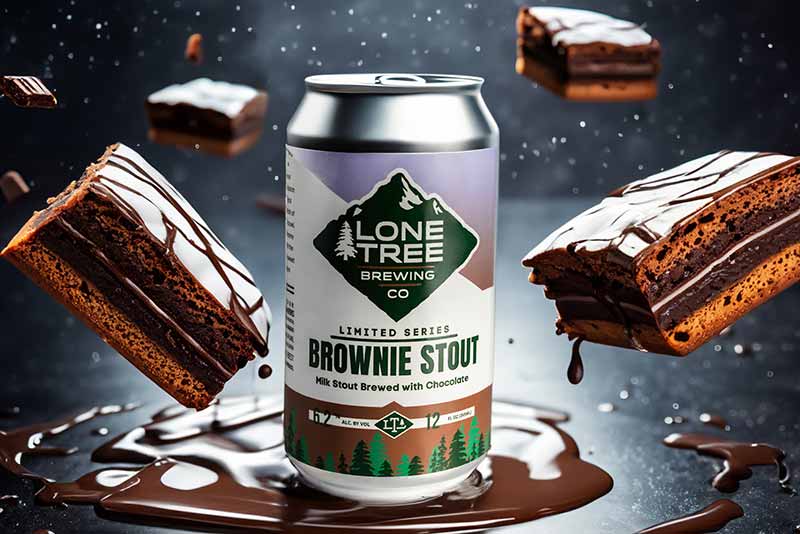
We’ve written extensively about how to make darker styles like porters, Märzens, and high-octane imperial stouts.
While imperial stouts are one of the most popular styles, ranking in the top ten most-checked-in beers on Untappd with 863k check-ins this year, another subset of this category has steadily grown.
Today, pastry stouts have become one of the most popular versions of the style. Basically, a craft beer that emulates dessert, pastry stout falls just outside of this year’s Untappd check-in data with three hundred thousand ratings for its category, “Stout – Imperial / Double Pastry.”
Experts in crafting great pastry stouts from Long Live Beerworks, Lone Tree Brewing, and Horus Aged Ales broke pastry stout down for us, explaining top considerations, ideal grist, and IBU and how long the beer takes to package. Read on to get the full scoop.
(Above photography courtesy of @lonetreebrewingco)
What We’ll Cover in This Piece:
Affordable, Industry-Leading Brewery Software
How Do the Experts Define Pastry Stout?
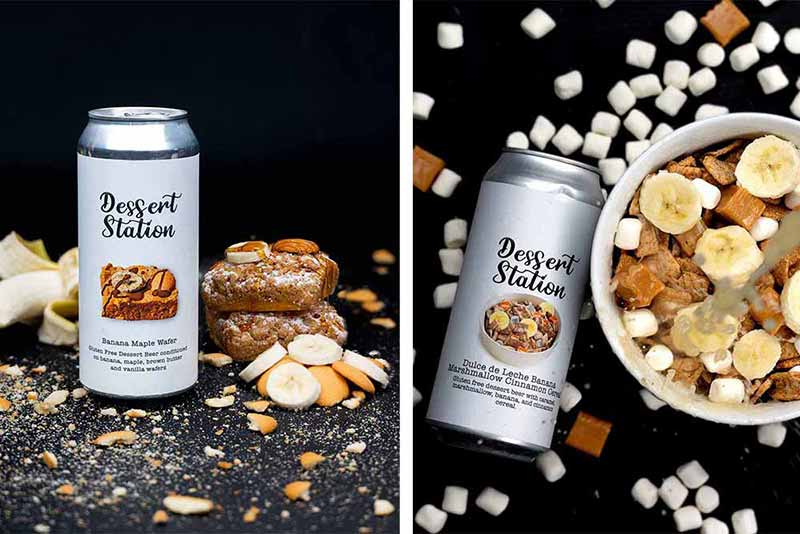
Photography courtesy of @corporateladderbrewing
Lone Tree Co-owner and Director of Brewing Operations Jerry Siote thinks pastry stout is a style that has picked up some over the past few years. For him, it’s about being able to consume more than one.
“Anywhere north of the 8% to 10% ABV range, you risk people perceiving they can only have one,” he believes. “A good pastry stout has to have a solid base beer. It has to have quality malt, good fermentation, and no off-flavors.”
Siote adds, “I think the base beer … has to stand alone before you add anything like chocolate, vanilla, or spice. In my mind, it has to be consumable, but it has to be sweet—a lot of lactose is used in these to achieve that. Those are the baseline things we think about here.”
Long Live Beerworks Brewers Armando DeDona and Jessica deBry feel it comes down to flavor.
“The beer has to have the flavors represented,” DeDona says. “If you model it after a dessert, it needs to taste how you describe it.”
DeBry adds, “Representation and the way it’s presented is important. It should be full in flavor and sweeter. Finding the balance in that can make an impactful experience. You have to hit all those flavor marks.”
For Horus Owner Kyle Harrop, who some in the industry refer to as the godfather of pastry stout, says the key is the balance of the base beer.
“You can go super hard on the sugar and not feel very good after,” he says. “Or take a refrained approach and use crystal and chocolate malts to drive the perceived sweetness instead of actual sweetness.”
Harrop adds, “I think a good pastry stout hits dessert notes and is sweet but not cloying. There’s some chocolate character in there—and something to balance that sweetness.”
But this is more than just a base beer. It’s a pastry stout. It has to have that dessert-type flavor bursting from the can or your glass. And what it boils down to is delivering on the taste that you advertise in the description of the beer.
“I would say our customers are looking for big, bold flavors in any pastry stout we put out there,” Siote says, noting their recent Brownie Pastry Stout as a great example of just that. “The base beer is obviously critical to the finished product, but the flavor better deliver on what’s listed on the description and should finish sweet—not over attenuated or astringent.
Siote adds, “Contrary to something like a dry Irish stout, which should have some chocolate and/or coffee ‘characteristics’ our Brownie Stout should hit you in the face with pure chocolate supported by a sweet stout underneath. Go big or go home.”
Harrop cites his Horus membership club, the Convocation Club, in explaining what his customers seek—and what he delivers—for their pastry stouts.
“They expect to taste what it says on the label. If it says vanilla, you better be able to smell and taste vanilla. Same for hazelnut. Same for coconut and so forth,” Harrop says. “They don’t necessarily want a lot of adjuncts, but they want to be able to easily identify them if they are advertised. They also expect things to not be too dry or too sweet, but instead a balance of both.”
He adds, “Ultimately, I think my fans want something where the alcohol strength is hidden well, that is not cloying and tastes like what they have come to expect the last eight-plus years.”
DeDona concurs.
“Our customers are expecting our stouts to deliver the flavor of the ingredients we used in the brew or for the stout to taste like the dessert that they are modeled after,” he says.
What Are Top Considerations When Brewing Pastry Stout?
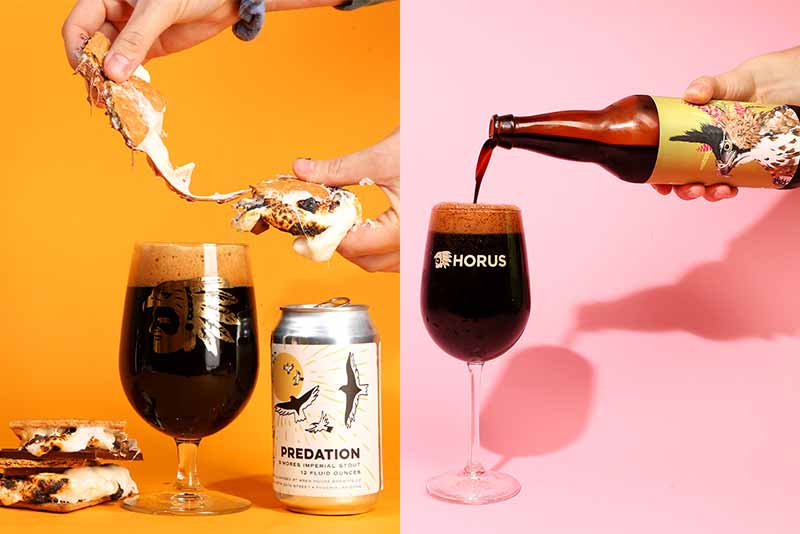
Photography courtesy of John A. Paradiso | Hop Culture
Harrop has several feelings on what can make for a great pastry stout, and a lot of it points to the grains you use.
“Complexity of the base malt, using a Maris Otter or Golden Promise, to get the rounded character that I don’t think I get from two-row,” he says. “Also, don’t be scared to layer the grain bill. Use a bunch of crystal malts and chocolate malts. I’ve had a lot that are ninety percent Maris Otter, five percent roasted barley, and five percent sugar, and it’s not great, so I think layering is vital in my opinion.”
Additionally, Harrop says that residual sugars don’t ferment out enough for his liking, so he advises doing a longer boil to condense the flavor and make it a more concentrated wort.
“It will make the ferment a little harder,” he says. “When you overwhelm that with more sugar, it adds to that problem [of residual sugars that don’t ferment out enough].”
Siote reiterated making the pastry stout not sessionable but consumable.
“There is room and space for special beers that are 15% ABV that you have ten ounces, and that’s it. If that’s what you’re going for, that’s great,” Siote says. “[But for me], I always start with consumable. Is this a good beer? Can I have two of them? Those are some of the baselines. It always comes back to good base malts.”
Additionally, Siote urges brewers to be wary of overdoing it with dark malts, as well as flavorings in post-fermentation.
“I’d say to keep it simple,” he says. “You want to have something that emulsifies well. Chocolate powder and vanilla do really well with that. Anything that isn’t a thick syrup is good.”
DeDona cites that many brewers use a lot of nuts in pastry stouts that can dry out your beer, which is not what you are going for. Making sure you dose the beer correctly is imperative.
“I would recommend doing bench tests,” he says. “It’s very important when working with high flavors.”
He also echoes the other experts, saying you should create a great base beer before you put other ingredients in it. And be mindful of your pH, as ingredients like crystal malts and chocolate malts, as well as coffee beans, can cause a dip below the ideal pH somewhere at or above 4.2, he says.
When Do You Incorporate Additives in Pastry Stout?
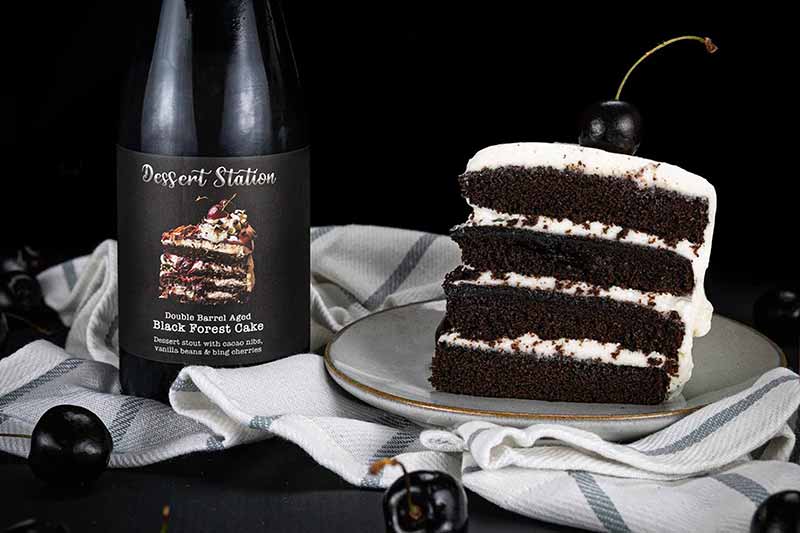
Photography courtesy of @corporateladderbrewing
Depending on what you’re using, you can add different elements of the pastry stout in different phases.
“Lactose goes in towards the end of the boil and is incorporated during fermentation,” Siote says. “Cacao, you can go many different ways. You can go with the boil or after fermentation. A pastry stout should have a thick, creamy white head; you might jeopardize that with cacao nibs in post-fermentation, so be aware of that.”
He adds, “For us, whether we use ground vanilla or cocoa powder, most of that is post-fermentation.”
Harrop, who says he always uses real ingredients—which can contribute to higher costs and lower yields at times, though provides the best-finished flavor—does most of his additions at the end of the process.
“Everything I have done is brite tank only,” he says. “It’s pre-packaging, and I have a pasteurizer now to not worry about refermenting. Everything I do is bagged and steeps like tea.”
Harrop adds, “I have done nuts in the mash before, and that’s bringing good character, but it still needs to be done on the cold side [for flavor].”
What Does a Typical Pastry Stout Grist Look Like?
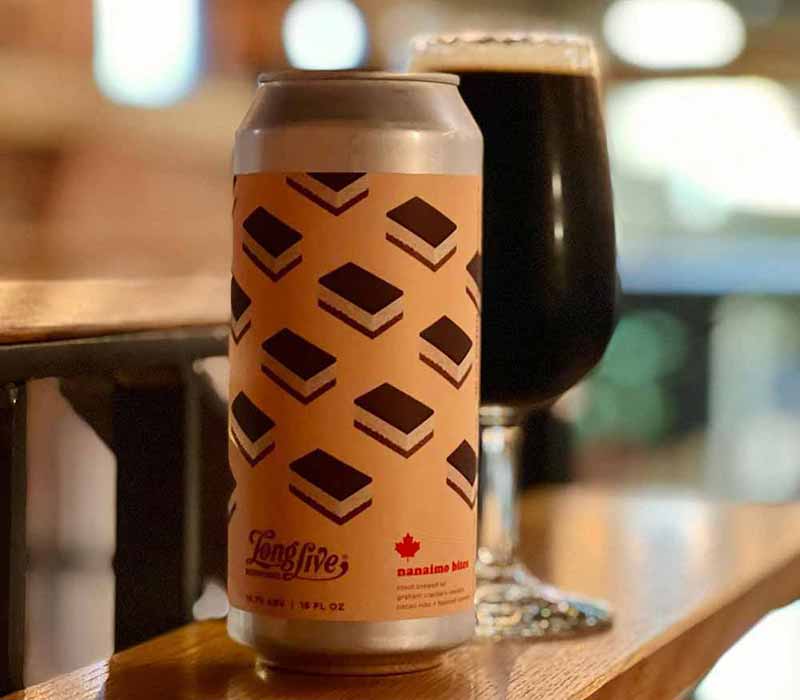
Photography courtesy of Long Live Beerworks
DeDona says he has spent hours sifting through maltster catalogs looking for different malts with different roasts to achieve the base malt to best exemplify a pastry stout.
“I like to use a lot of chocolate malt and mix that with roasted malts and Weyermann CARAFA® malt and play with different crystal malts,” DeDona says. “We use some oats in there, too, to make it creamier. I feel if you don’t use [oats], it makes it stickier.”
Harrop says he mashes his typical grist at 150 degrees Fahrenheit to get the desired extraction.
“We use a Maris Otter base, a variety of crystal malts, pale chocolate, and some Munich,” he says. “I go extreme on crystal malts, so I probably use a lot more of that than most people.”
Siote says Lone Tree holds a 156-degree Fahrenheit mash temp to keep the beer from drying out too much and maintain a hefty body.
“We like to use a lot of chocolate malt,” he says. “You can overdo it, but finding that right balance with Vienna malt, Dextrin malts. Whether using two-row or if you want to upgrade to English two-row, Maris Otter or Golden Promise, just get the right balance and good SRM and get that black quality.”
What IBU Is Ideal for a Great Pastry Stout?

Photography courtesy of @greatnotion
Siote likes some kind of English-style hop like East Kent Goldings or Fuggle—something earthy—and goes with a sixty-minute addition as well as a charge later in the boil.
“We do want a certain amount of bitterness to balance this thing,” he says. “It all comes back to drinkability. It’s not over thirty IBUs.”
Long Live Beerworks prefers Warrior hops for bittering for at least sixty minutes.
“We put them in before we’re at a boil because some boils in stouts are prone to boilovers,” DeDona says. “We take it to around twenty IBUs.”
DeDona adds that the addition of enough hops in a pastry stout helps with preserving the beer and avoiding infecting it should you plan to barrel age the product.
Harrop is out of left field with his hop choice in a pastry stout, saying he likes to use Nelson in his and occasionally Columbus.
“Nelson gives a fruit character to these beers that I like,” he says. “We shoot for IBUs between thirty and fifty depending on how long the beer is going to be in barrels.”
What ABV Makes for a Great Pastry Stout?
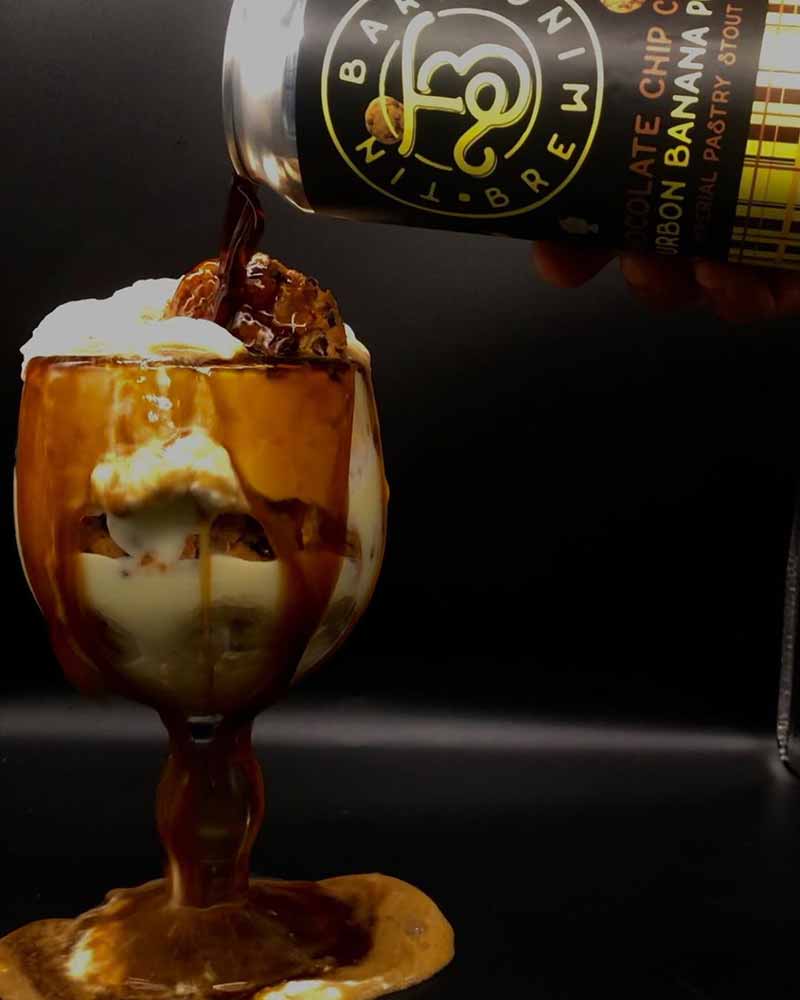
Photography courtesy of Tin Barn Brewing
Siote feels this style can have ABVs all over the spectrum but prefers his to be a more approachable level of alcohol.
“I can drink a stout any season,” he says. “If I’m going to do that, I’d like it to be below 7% ABV—consumable and drinkable.”
Noting that he doesn’t like to add sugars, Siote says that you can only make a beer so high in ABV without adding molasses and dextrose.
“There’s a lot of education that has to happen,” he says. “Something can still be roasty and a sweet stout and not be a one-and-done beer.”
Harrop goes high octane with his pastry stouts, saying that if it’s packaged right out of the tank, he shoots for 13% ABV, and somewhere in the neighborhood of 15% ABV for a barrel-aged product.
“When you throw adjuncts in the mix, that drops [the ABV],” he says. “A barrel-aged pastry stout with coconut and vanilla, 13% ABV is fine. But if you want a spirit-heavy pastry stout, 15% ABV is the sweet spot.”
Long Live Beerworks is somewhere in between the two.
“For us, it’s 9% ABV and above,” DeDona says. “I like the 10% ABV a lot. It’s perfect for me. I can have a couple and still feel OK and not have a hangover.”
How Much Time to Turnaround a Pastry Stout?
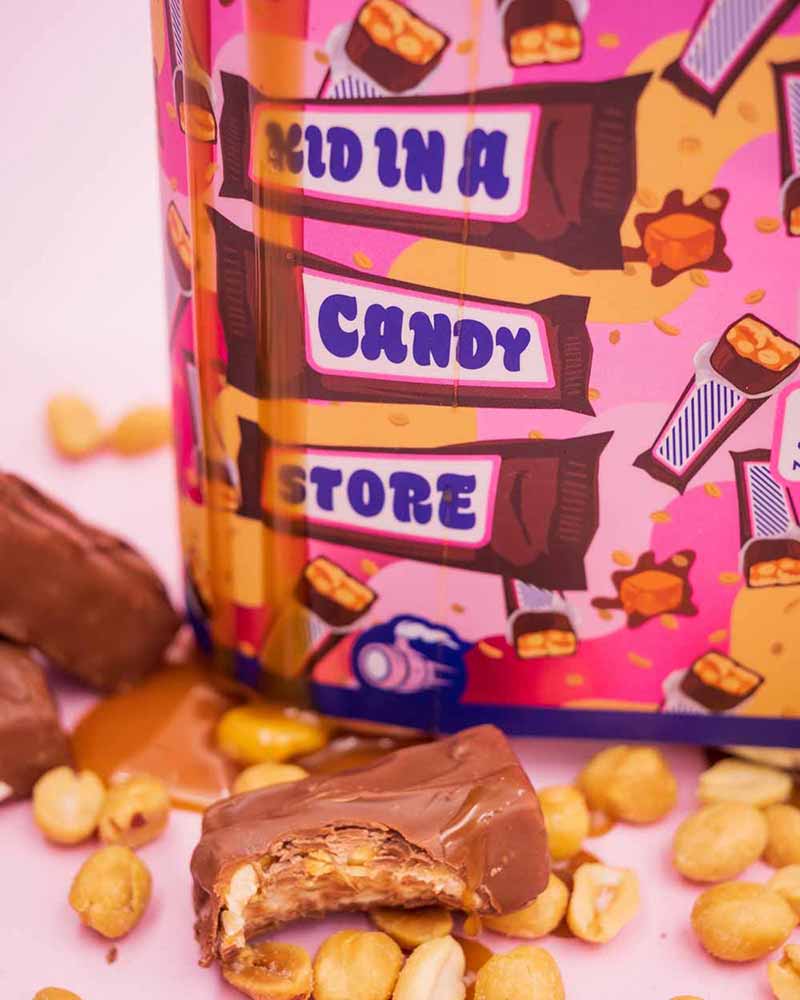
Photography courtesy of @weldwerksbrewing
Explaining he likes to give the beer as much time as it needs, DeDona says the average turnaround for their pastry stout is about a month.
“We’re not in a rush to put those beers out. However long they need, that’s what we give them,” DeDona says. “A centrifuge works well with these beers, too. Certain adjuncts need more time; others need less. … It really varies.”
Harrop explains the time his pastry stouts need is based on whether it is packaged fresh or barrel-aged.
“For fresh, I would say six weeks, but I’ve gone upwards of ten,” he says. “Barrel-aged pastry stouts are a ten-month minimum. I’ve pushed one to five years, but ideally, the twenty-three to twenty-eight-month mark is what I shoot for.”
As a lower-ABV pastry stout, Siote’s beer doesn’t need as much time but cautions to give it—and all ales—the time it needs.
“It’s a three-week beer for us,” he says. “We want to keep it as fresh as possible and get it out around twenty days.”
Three Examples of a Great Pastry Stout?
Lone Tree just released a Brownie Chocolate pastry stout that Siote is very proud of. The 6.4% ABV beer has notes of dark chocolate and chocolate malt with a creamy mouthfeel.
“The recipe is great,” he says. “I would hang our hat on this one.”
Harrop broke it down to two beers he is most proud of—one that contains adjuncts and one that does not.
The non-adjunct is Cloud Breaker One, a 14% ABV beer aged fourteen months in George T. Stagg bourbon barrels.
“It’s got crazy character that I’ve never achieved before,” he says.
The beer with adjuncts is Gloop, Gloop, Gloop, Gloop. This one isn’t out just yet, but it incorporates coconut, chocolate, caramel, and peanut brittle and ages in Baker’s bourbon barrels.
“I used Emperor’s Coconut that is cooked in its own fat and four pounds per barrel of peanut brittle,” he says.
DeDona cites Kiss the Night Goodbye as his favorite pastry stout from Long Live Beerworks. The beer is 12% ABV and is triple barrel-aged in bourbon, apple brandy, and vanilla bourbon barrels.
“Putting stouts in apple brandy barrels is my favorite. It tastes so good and makes it richer at times,” DeDona says. “Over time, it adds another element to the beer. That’s my favorite we’ve ever done.”



